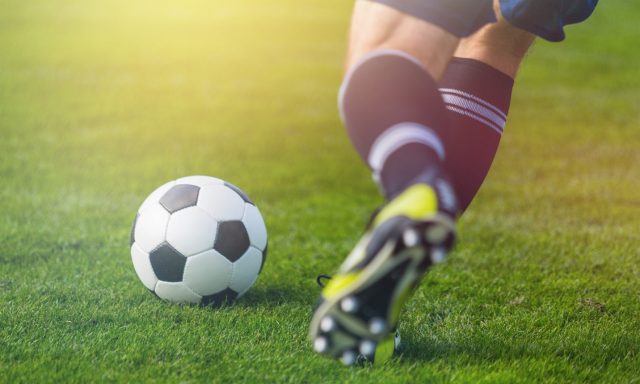Competing at the Division 1 level in college soccer is the pinnacle of athletic achievement. It requires not only skill and tactical understanding but also an exceptional level of physical fitness. Division 1 soccer players must possess a unique blend of strength, endurance, speed, and agility to meet the demands of the game. Kevin Morgan of New York explores the comprehensive physical fitness requirements necessary for aspiring Division 1 soccer athletes.
Strength
- Upper Body Strength
While soccer is predominantly a lower-body sport, upper-body strength is also crucial for shielding the ball, winning aerial duels, and maintaining balance. Kevin Morgan of Pittsford, NY, explains that players need strong shoulders, chests, and arms to fend off opponents and retain possession under physical pressure. Incorporating exercises such as push-ups, bench presses, and pull-ups into a training regimen will help to enhance upper body strength.
- Core Strength
A strong core is the foundation for all movements in soccer. It aids in stability, balance, and power generation for shooting, passing, and sprinting. Core exercises such as planks, Russian twists, and medicine ball throws should be a staple in any Division 1 soccer player’s fitness routine. A robust core allows players to maintain control and composure, even when under intense physical duress from opponents.
- Lower Body Strength
Lower body strength is paramount in soccer for actions such as sprinting, jumping, and changing direction. Strong legs enable powerful shots, quick sprints, and effective tackles. Exercises like squats, lunges, deadlifts, and calf raises help build the necessary muscle strength and endurance. Plyometric exercises such as box jumps and jump squats are also beneficial for explosive power.
Endurance
- Aerobic Endurance
Soccer matches last 90 minutes, often requiring players to cover 7-9 miles per game. High levels of aerobic endurance are essential to maintain performance throughout the match. This endurance allows players to recover quickly from intense bursts of activity, such as sprints, while continuously performing at a high level. Training for aerobic endurance includes long-distance running, interval training, and aerobic workouts such as cycling or swimming.
- Anaerobic Endurance
In addition to aerobic fitness, soccer players need anaerobic endurance for repeated high-intensity efforts. This includes sprints, quick changes in direction, and jumping. Training for anaerobic endurance involves high-intensity interval training (HIIT), sprint drills, and shuttle runs. Kevin Morgan of Rochester NY explains that these workouts help directly improve the body’s ability to perform and recover from short, explosive movements repeatedly throughout the game.
Speed
- Sprint Speed
Speed is a critical attribute for Division 1 soccer players, affecting both offensive and defensive capabilities. Players must be able to accelerate quickly to chase down balls, evade defenders, and close in on opponents. Sprint training involves short-distance sprints (20-50 meters), resisted sprints using parachutes or resistance bands, and agility ladder drills to improve acceleration and top-end speed.
- Agility and Quickness
Agility, the ability to change direction rapidly and efficiently, is vital in soccer. Kevin Morgan of Pittsford NY emphasizes that it allows players to navigate through tight spaces, dodge tackles, and react quickly to changing situations on the field. Training for agility includes cone drills, zigzag runs, and agility ladder drills. Quickness, or reaction time, can be improved through drills that incorporate sudden changes in direction or speed, enhancing a player’s ability to respond to the dynamic nature of the game.
Flexibility and Mobility
- Importance of Flexibility
While flexibility and mobility are often overlooked aspects of physical fitness, they are crucial for injury prevention and overall performance. Flexible muscles and joints allow for a greater range of motion, reducing the risk of strains and sprains. Stretching routines, yoga, and dynamic warm-ups should be integrated into a player’s training program to enhance flexibility and mobility.
- Dynamic Warm-Ups
Dynamic warm-ups involving movements that prepare the muscles for the specific demands of soccer are essential. Kevin Morgan of New York notes that these include exercises like leg swings, high knees, butt kicks, and arm circles. Dynamic warm-ups increase blood flow to the muscles, improve joint flexibility, and enhance coordination, making them an important part of pre-training or pre-game routines.
Recovery
- Rest and Recovery
Rest and recovery are critical components of a Division 1 soccer player’s fitness regimen. Intense training and competition put significant stress on the body, and adequate recovery is necessary to repair muscles and prevent overuse injuries. Recovery strategies include proper sleep, nutrition, hydration, and techniques such as foam rolling, massage, and ice baths.
- Nutrition and Hydration
Nutrition and hydration play pivotal roles in a player’s performance and recovery. A balanced diet rich in carbohydrates, proteins, fats, vitamins, and minerals provides the energy and nutrients needed for training and recovery. Kevin Morgan of Rochester, NY, understands that hydration is equally important, as even slight dehydration can impair performance. Players should always focus on drinking water regularly and replenishing electrolytes lost through sweat.
The physical fitness requirements for Division 1 soccer players are extensive and demanding. Achieving and maintaining the necessary levels of strength, endurance, speed, agility, flexibility, and recovery is crucial for success at this elite level. Kevin Morgan of Pittsford, NY, emphasizes that aspiring Division 1 soccer athletes must commit to a comprehensive and well-rounded fitness program that addresses all these aspects to excel on the field and reach their full potential.









